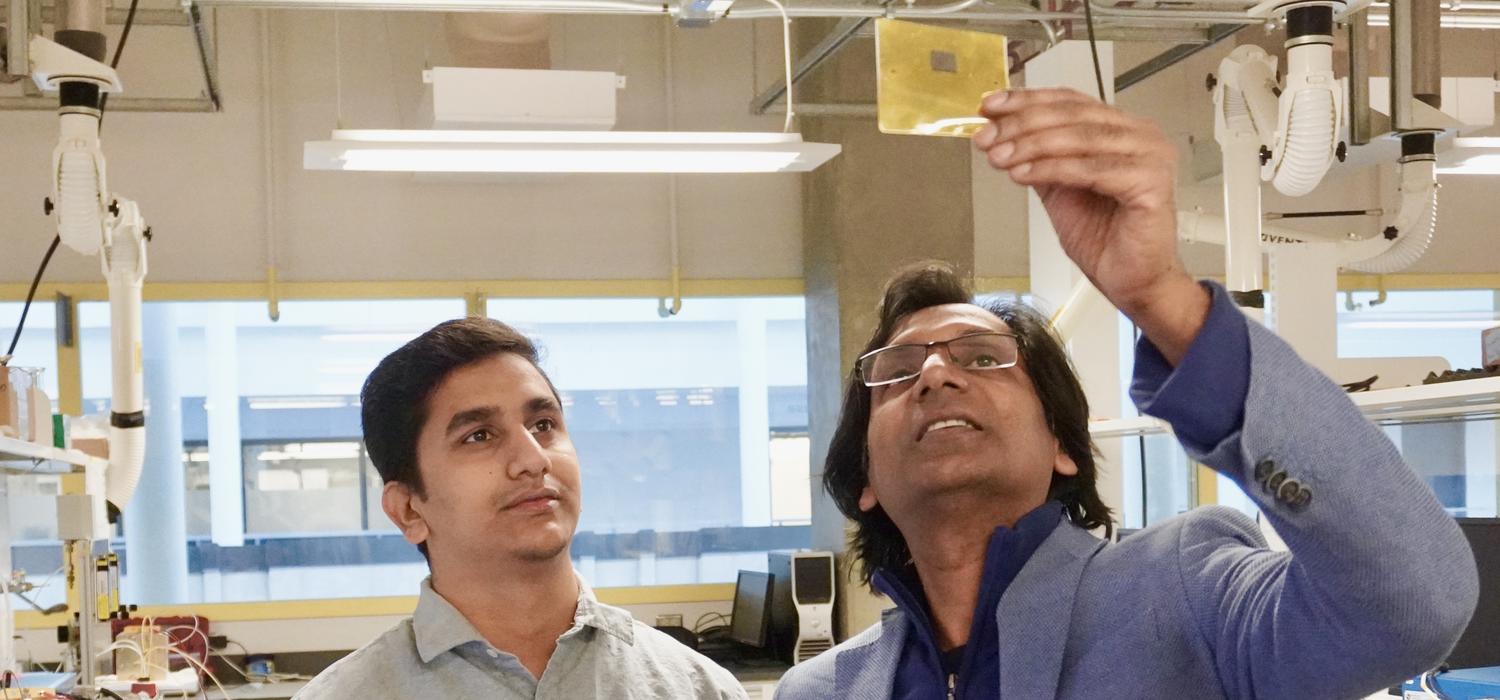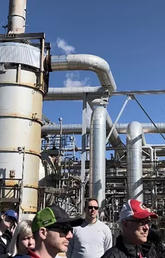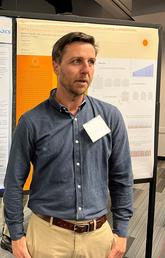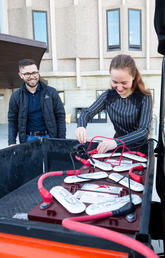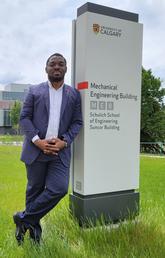Researchers at the Schulich School of Engineering have made what they're calling a significant breakthrough toward creating higher-performance and lower-cost fuel cells to convert hydrogen into electricity.
As concern about climate change increases, interest in using hydrogen to produce clean electricity has exploded in recent years. Fuel cells are a critical enabler for large-scale adoption of hydrogen in transportation, materials handling (such as forklifts), backup power and more. And Schulich is at the forefront of developing the next generation of fuel cells.
“We get higher performance using less catalyst,” says Dr. Kunal Karan, MSc’94, PhD’99, a professor of chemical and petroleum engineering, and associate director of the Calgary Advanced Energy Storage and Conversion Research – Technologies Group.
Karan and his colleagues outline how to, they say, “get more out of less” in the paper, “Designing Fuel Cell Catalyst Support for Superior Catalytic Activity and Low Mass-Transport Resistance,” published in Nature Communications. “We don't have a new catalyst. We have a better way to structure the catalyst which gives you very high activity,” says Karan.
Fuel cells use a precious metal, platinum, as a catalyst to create the chemical reaction. Catalysts need to be attached to a catalyst support. Working against conventional wisdom, the researchers shattered a 30-year paradigm by using a larger catalyst support, a 130-nanometre carbon particle rather than a 30-nanometre one (a nanometre is one-billionth of a metre).
“Imagine the catalyst support as a soccer ball and you are sprinkling it with precious metal particles on top of it, and that's where all the electrochemical reactions are happening. The size of the ‘soccer ball’ was fixed for 30-plus years,” says Karan.
The researchers also changed the surface chemistry of the catalyst support. “Just like we space plants apart so that they don’t compete with each other, yet they are close enough that the ground is maximally utilized, the surface design of the new catalyst support spaces out the catalyst — far enough not to compete for food (and) oxygen, but not too far to leave unutilized surface,” says Karan.
Interest in fuel cell technology expanding worldwide
Nearly all countries in the Organisation for Economic Co-operation and Development, including Canada, the U.S., Australia, Japan and the European Union, have launched hydrogen strategies in recent years. Companies including Volvo, Cummins, Hyundai, Hyzon and Nikola Motors have long-haul trucks powered by fuel cells in the testing or advanced production stage, and Plug Power is building hydrogen ecosystems to service massive companies such as Amazon and Walmart (including using fuel cells in forklifts at Walmart’s distribution centre just north of Calgary).
“The three pillars for success of any technology are cost, performance and durability,” says Karan. “In order for widespread adoption (of the fuel cells), we want the cost to be lower — that’s one of the big technological challenges. Most of the cost is associated with the use of expensive platinum, and we make better use of the platinum.”
While this research addresses higher performance and lower cost, creating durable fuel cells “remains a challenge,” says Karan. The targets for durability have increased dramatically from fuelling personal vehicles to creating fuel cells for long-haul, heavy-duty trucks. Karan and his research colleagues are working on helping solve that issue as well.
“I think we will have something very interesting to report soon,” he promises, adding that, in the meantime, the already published research will help propel the design of next-generation, high-performance electrodes.
Eyes High scholar contributed crucial knowledge
The study was authored by Schulich scholars, Dr. Naoshad Islam, PhD'20; graduate student Abdul Bashith Mansoor Basha; Dr. Vinayaraj Ozhukil Kollath, DSc; and Karan.
As former Eyes High postdoctoral scholars, Kollath brought his knowledge of biomaterials to create the catalyst support material, while Islam transferred his experience in synthetic chemistry by transforming the support material into functional catalyst. Working with Basha, they demonstrated the remarkable properties of the catalyst in a benchtop fuel cell device.
“The seeds for this study were planted from insights gained in two decades of my fuel cell research and brought to fruition with Kollath’s biomaterials and Islam’s synthesis expertise,” says Karan. “This is an example of ... a diffusion of knowledge from one area to another. That's the beauty of getting untethered funding — Eyes High Scholarships — to pursue innovative research ideas.”


